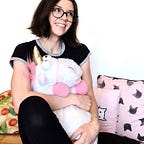Can a more sustainable future be achieved through creative recycling?
Have you ever looked down at the bottle you’re holding and wondered if the lid can be recycled? What about the greasy pizza boxes still sitting on your coffee table three days after that big weekend?
The uncertainty about exactly what can be recycled often causes unnecessary anxiety and can ultimately result in that aforementioned bottle ending up in general waste or those greasy pizza boxes incorrectly being thrown in the recycling bin. Items ending up in recycling facilities when they shouldn’t results in councils (and therefore residents) spending a lot of money to fix these avoidable mistakes.
Can we help the community feel confident in their recycling efforts?
Can a more sustainable future be achieved through creative recycling?
With some luck, and hopefully through the efforts of this design sprint, the answer to both of these questions should be: Yes!
After the local government of South Australia released their My Local Services app to a warm community welcome it quickly became apparent that many residents struggle with recycling and could benefit from a recycling feature within the app.
My ultimate goal for this design sprint is to bring enjoyment to recycling by removing uncertainty and encouraging creativity.
Following the design sprint steps outlined by Jake Knapp I began working towards a solution to the design brief. Off the bat I defined the primary goal and brainstormed how the prototype could fail. I considered how I might reach the end goal and settled on three final ‘How Might We’ questions:
How might we keep users coming back for more?
How might we encourage creativity?
How might we give the app a friendly personality?
From here I developed a short and snappy User Flow Map using the KISS (keep it simple, stupid) design principle which led me to the prototyping target area: Creativity, or more specifically featuring how-to guides and involving community interaction.
With my notes sprawled across the desk in front of me I began exploring existing solutions on Dribbble and Pinterest in order to kick start my own creative juices. Over the course of an hour I had five pages of sketches on my desk featuring various screens and ideas that I then approved or rejected, leaving me with a succinct list of final features for the prototype.
Continuing to work with the user flow map from day one of the sprint I sketched out a final storyboard featuring different stages or each possible screen. Finally, I turned to Figma to create digital wireframes and ultimately the final app prototype, constantly referring back to the storyboard and features list to ensure I kept true to the primary goal.
The colours, typography, and structure of the existing My Local Services app feels harsh and uninviting. In creating the final prototype I used the existing design language as inspiration and overhauled the typography and structure in the hopes that a more minimalistic and aesthetically pleasing design would appeal to a wider audience.
The user testing confirmed this assumption with both the testers commenting on the simplicity of the design in a positive way. Although both test users agreed that the app prototype has the potential to become a well loved addition to the original app the male tester made it quite clear he was never likely to use anything other than the ‘recycle’ option on the menu.
“Would you be more inclined to use the app if it featured a workshop or DIY section that focused on woodwork or similar projects?”
A grin quickly spread across his face as I asked the question, clearly I’d hit the jackpot. Although my original intention was to create a prototype that appeals to women by emphasising the crafting portion of the app I didn’t consider that I could use that same technique to appeal to men as well. This is a feature that further development could easily address.
Other discoveries made during the user tests include suggestions to add a dedicated ‘kids’ crafting section, highlight garage sales, and provide users with alternative material suggestions if they’re missing specific items for a project. When navigating through the ‘how to’ guide the female tester laughed, saying
“It was nice to use an actually helpful version of Pinterest”
Ultimately the prototype addresses the original project brief and has improved upon the original design language, however further development of the project options would see the primary goal reached for a wider range of users.
I think it’s safe to label this design sprint project a ‘flawed success’.
Explore the prototype below.
